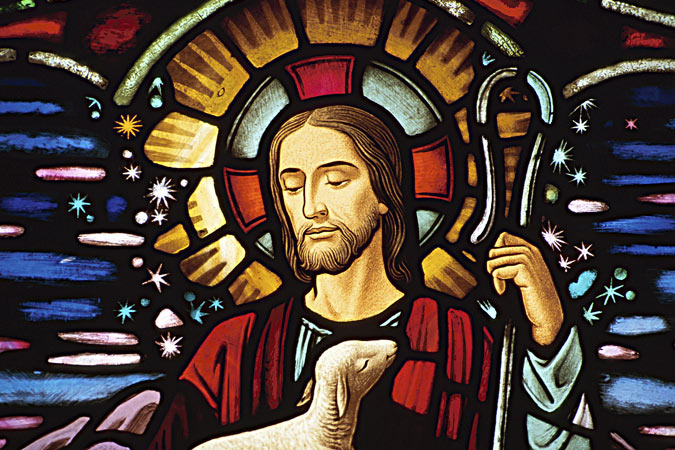
I attended the celebrations of First Reconciliation and First Holy Communion at several different churches last year. While I was able to experience the joy of the sacraments in many different ways, I often heard the same Gospel reading: the parable of the Good Shepherd. This parable is a natural choice for these sacraments. It is a beautiful passage that depicts the intimate love and relationship between God and God’s people, and helps us to appreciate the depth of the grace that is present in the sacraments. Additionally, sheep are fuzzy and cute, which provides opportunities for cheap and easy crafts that we can do with our students after discussing the story in class.
As I listened to the homilies at these celebrations, I also watched the children who were waiting to receive God’s grace. Although the reading and homilies offered great truths, much appeared to be lost in translation. Most kids in America have a hard time relating to sheep. How can we enhance our students’ understanding of this story while keeping them engaged? A game similar to Simon Says will help your students experience the parable of the Good Shepherd in a new way.
To play the Game of the Good Shepherd, team up with another catechist (or catechists) and their class(es). Secure a large enough space for all of your students to comfortably have room to move around.
Begin by gathering your students together. Explain that they will have some time to talk and play with the other children, but they need to listen for and follow instructions from their own catechist. The students have to ignore the instructions issued by the other catechists.
As the children are interacting with one another, have the catechists take turns sharing instructions with the room. They can be as simple as “Clap your hands twice” or as complex as “Jump up and down five times and walk a lap around the room.” To make things more difficult, the catechists can turn their backs on the room when the directions are given so the children cannot see who is issuing them.
Once you have finished, gather your students and discuss their experience of the game by asking the following questions:
- Was it difficult to keep track of your instructions and not those of the other catechists?
- How did the children know when the directions were yours?
Emphasize answers when the students respond that they recognized your voice.
After the discussion, read aloud the parable of the Good Shepherd. (John 10:1–16) Remind your class that there was not just one shepherd with his sheep at this pasture, but many shepherds gathered with their herds at each pasture. The sheep and the shepherd had to know each other very well so the sheep wouldn’t get lost, left behind, or head home with the wrong shepherd.
Help your students make the connection between the game they just experienced and the parable. Just as your students had to listen for you and your voice, the other students had to listen for their catechist while directions were being shared during the game.
Brainstorm other encounters from the children’s lives when they may have experienced similar situations. This could be listening for their teacher’s voice to come in from the playground or listening for their parent’s or guardian’s voice at a store.
Conclude the lesson in prayer. Consider using your own prayer, or use the following: Dear God, you know us inside and out, and you love us so much. We promise that we will listen for your voice that leads us to make responsible decisions and to share love with others. Help us when we feel lost and confused so that we can focus on you. Amen.
How do you help children relate to and understand the Gospels? How do you teach children to listen to Jesus, the Good Shepherd?





Your point is so true, and what a terrific idea to help children grasp the significance of Jesus’ illustration! Thank you for sharing, I’m passing it on to my teachers.
Thanks so much, Roberta! I hope your students have as much fun while learning as mine did!
peace,
Shannon
Shannon do you know more about the picture of the good shepherd that you show at the top of your article? I.E. where it is and what the name of the stained glass is? Thanks